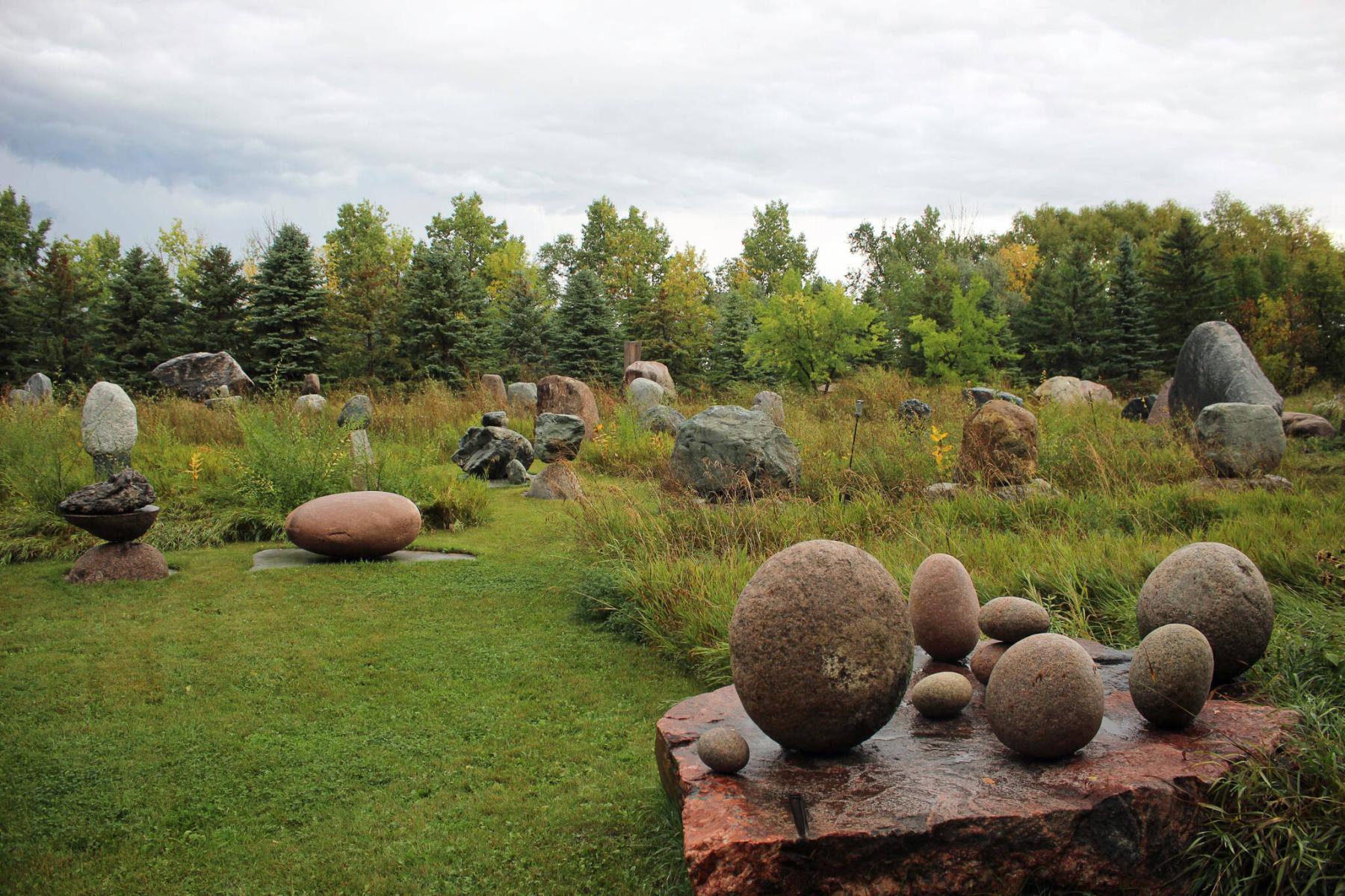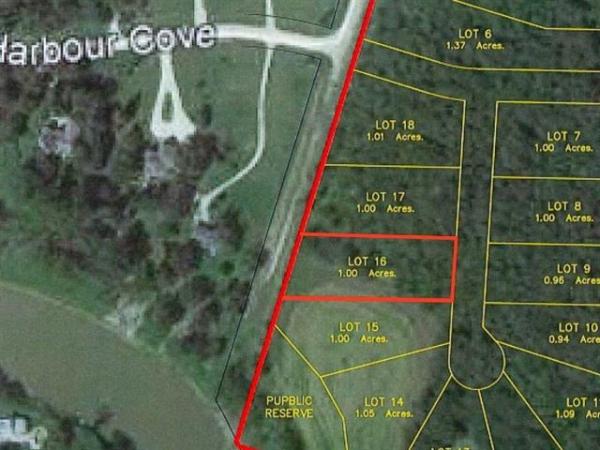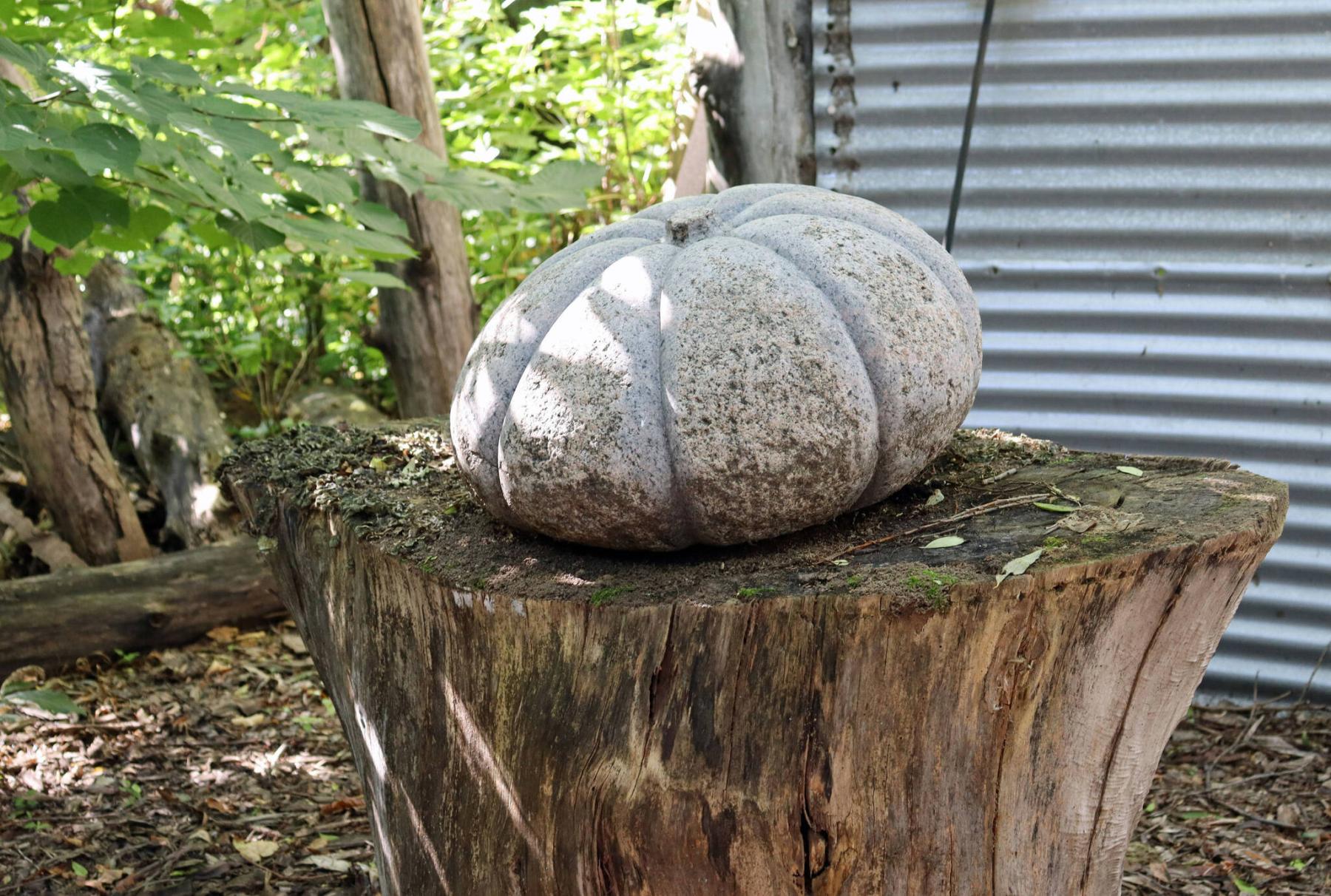
Colleen Zacharias
Looks are deceiving: A carved stone pumpkin sits perched on a tree stump.
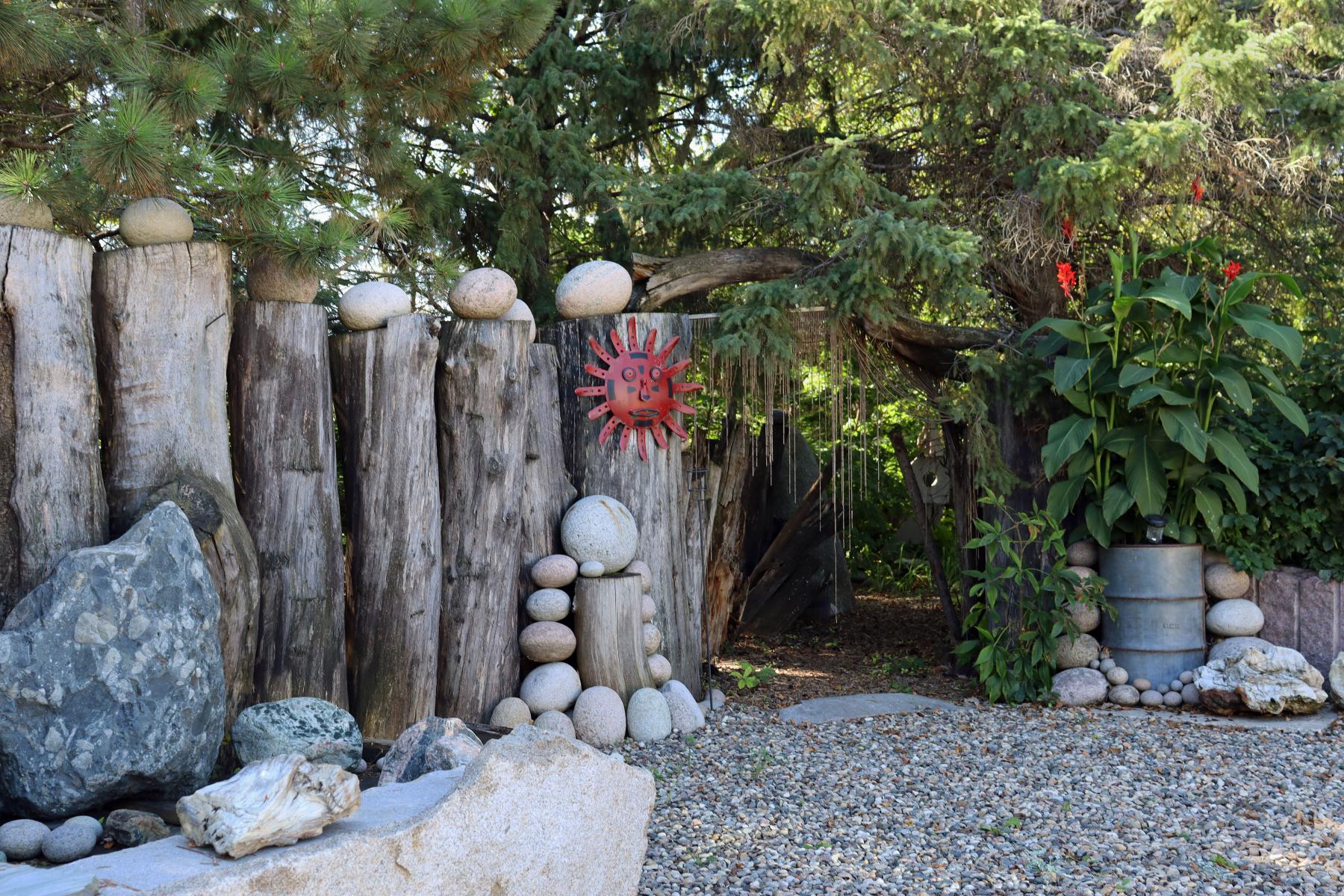
Colleen Zacharias
Todd and Lisa Braun’s unique stone garden near Altona has a distinctly primordial feel.
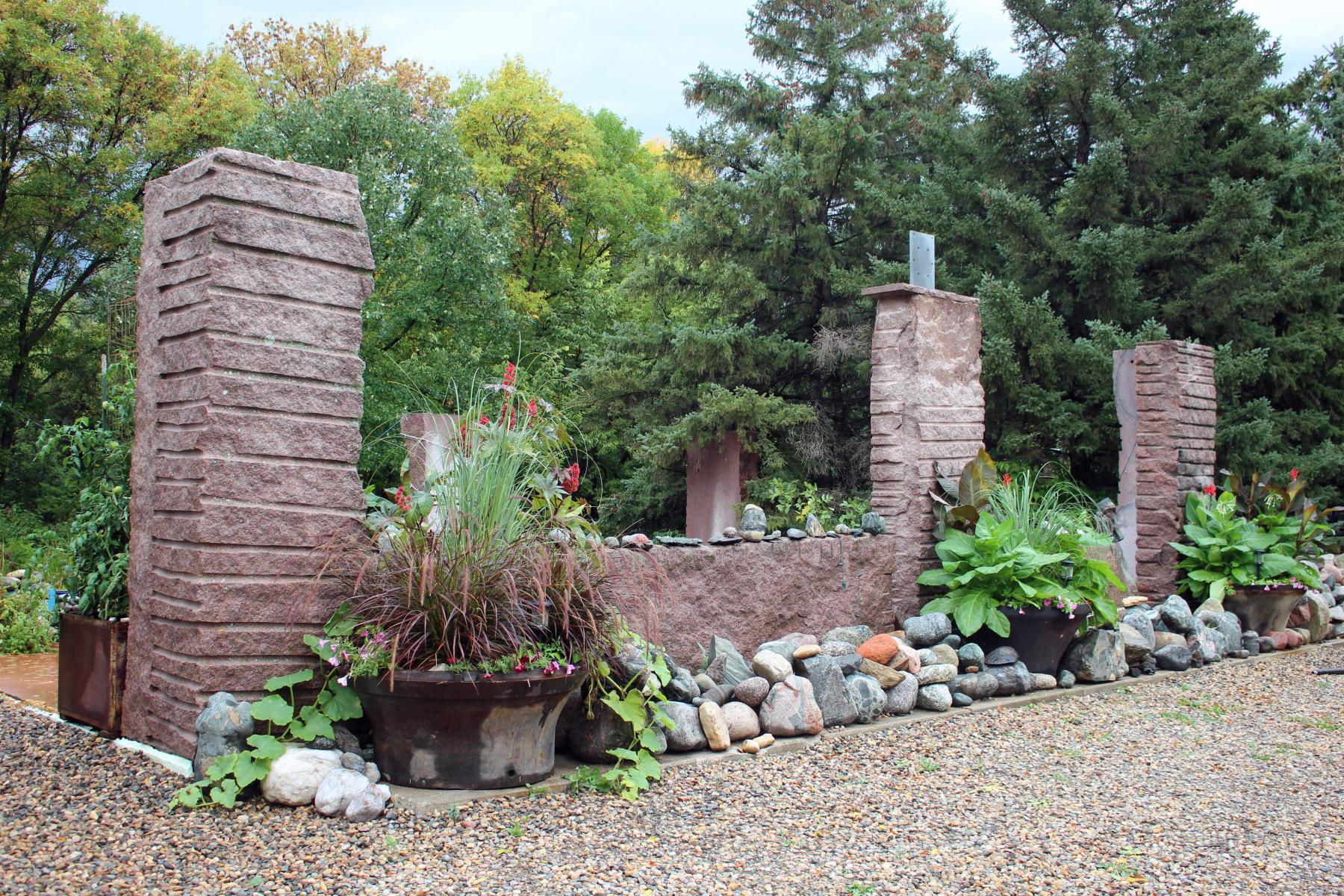
Todd Braun
A work in progress: Braun, a rock-carver, is crafting a building with stone columns.
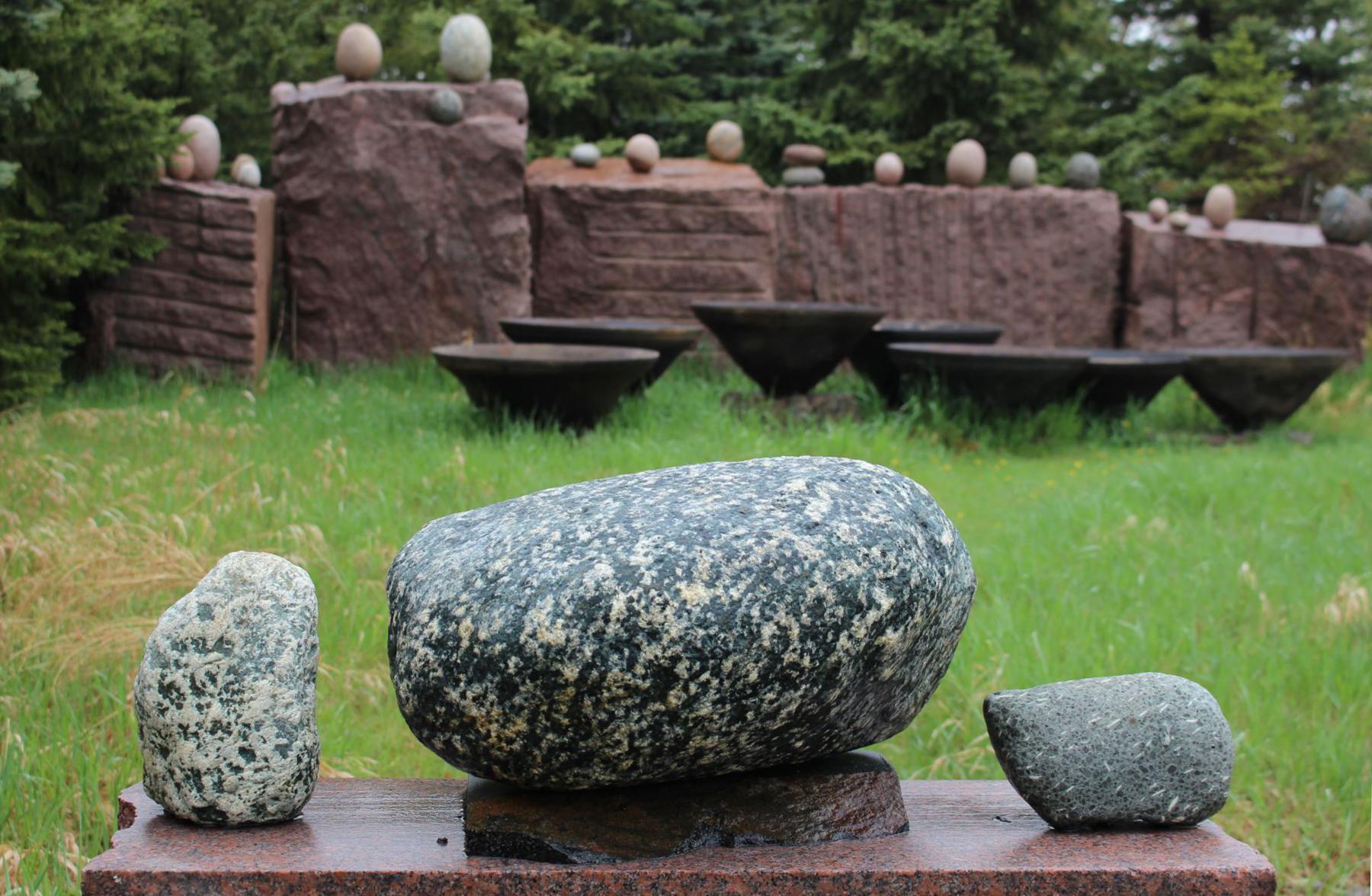
Todd Braun
Visitors to the outdoor gallery can check out Braun’s vast collection of rocks — including round stones and bell-shaped rock crushers that make music.
Todd Braun is a well-known stone artist whose work is found in many public places and private gardens in Manitoba. Perhaps you have visited Elemental Stone, his two-hectare property east of Altona, on one of the private tours he and his wife Lisa offer each year. It’s an astonishing opportunity to see a landscape like no other.
There are outdoor galleries surrounded by trees, long winding pathways crafted from stone slabs at least 30-centimetres thick, tall stone pillars that look as though they came from an ancient temple, long and intricately designed stone walls with broad ledges, and stone bridges that have been carved from a single solid piece of rock, one of which is four metres long and weighs more than 5,440 kilograms.
Everywhere, one sees examples of Braun’s work — a giant butternut squash carved from stone, a 2,700-kilogram stone bench he is creating for a client, granite fountains and bird baths, polished stone bowls, and giant-sized stone sculptures that are works in progress.
Even Braun’s container displays inspire awe with their enormous 3.6-metre-tall banana plants and ample canna lilies, woodland tobacco (Nicotiana sylvestris), and popcorn plants (Senna didymobotrya) planted in massive terra cotta planters and riveted crane concrete buckets from the 1920s and ’30s.
“It has to be big and then, too, I like big because it has a little more ‘oomph’ and makes it more primordial looking,” says Braun. “The thing is, if you live on a city property or a town yard, you have to be careful to consider proportion. When you have (two hectares), you need to have something that has size. For example, rocks that you can move by hand are like moving gravel — they don’t really register at all.”
Carved stone pumpkins weighing hundreds of kilograms are among some of his smaller pieces, and these sell very quickly. On my visit this fall, one of Braun’s stone pumpkins was displayed on a 1.4-metre-wide cottonwood tree stump. Whenever he learns of an ancient tree being felled on a farmyard, he rescues the majestic stumps so they can live on in his garden to form a tree stump fence or serve as a pedestal for a piece of stone art.
On my recent visit, I saw many wonderful pieces of stone art that Braun has carved but I also had a chance to see his new projects. Braun is embarking on a whole new chapter, the biggest project of his life: a geological rock garden on the scale of an outdoor museum.
A serious collector, Braun first became interested in rocks when he was a teenager growing up on his parents’ farm. Today, at 63, he has amassed an important geological collection of igneous, sedimentary and metamorphic rocks that tell the history of Manitoba. He has also collected unusual rock specimens from countries like Finland, Australia and Japan.
But these are not pebbles easily transported in a box or small crate. One of Braun’s prized possessions is a truly magnificent egg-shaped rock that was shipped from an orbicular granite quarry in Western Australia. “It weighs over a tonne,” says Braun. “I have orbicular rocks from 20 places around the world.”
In a large clearing on his property that was formerly a pasture, Braun’s collection of rocks is displayed in a variety of ways — on huge pieces of iron pipe, Tyndall stone or massive bell-shaped parts of old gravel crushers turned upside down. Braun collects those, too, and artfully arranges them in groupings. Strike them and they make a sound exactly like the chimes of church bells.
There are also groupings of large ball-shaped stones called cannonball concretions. “They were formed in the Cretaceous period,” said Braun.
I was fascinated by a craggy black rock that resembles a face. “Geologically speaking, it is a migmatite,” said Braun. “The craggy shape is the result of what geologists call differential weathering. The softer parts weather away while the more resistant parts remain. It is a natural sculpture.”
While some of the rocks in this newly created gallery were collected many years ago, Braun could not bring himself to part with them even though clients would ask. Somehow, he innately knew he wanted them for another purpose. He began to see they were beautiful without the need to be carved into an object.
“I started realizing that if I find a special or rare type of rock, I might never find another one like it,” said Braun. “That’s when I began thinking about preserving these rocks.”
Braun has spent much of his adult life scouring gravel pits throughout Manitoba. One of the specimens in his collection is an extraordinary garnet gneiss rock that weighs close to 14 tonnes. “I first saw it in a gravel pit and followed it for at least 10 years,” said Braun. “It was being pushed from here to there and getting ready to be crushed and made into gravel. The thing is, a lot of those stone piles where I collected rocks over the past 30 or so years are long gone. You can’t go and collect rocks there anymore because they’ve already been made into gravel. If I hadn’t collected them, nobody would know that they ever existed.”
Braun says that at a certain point he also realized the rocks he was collecting and saving needed to be displayed together. “The whole is greater than the sum of its parts. The rocks need to go together to tell the story of Manitoba’s geological history and open up people’s imaginations. Everything in this world is temporary, except stone. Stone is the closest thing we get to permanence in this world.”
As significant as Braun’s latest project surely is, he has another impressive venture in the works. Braun is building a large stone building with stone columns and a stone floor. He built the foundation in 2004 but is now planning to add a roof and possibly a second story.
“We are typically open for private tours, by appointment, from July to October, for groups of 10 or more,” Braun said. “Once the building is finished, people may also be interested in booking it for events.”
Braun plans to continue stone carving but he is also looking to the future and other opportunities. His dream now is to continue to add unique and spectacular specimens to his one-of-a-kind rock museum. This winter, as soon as the ground is frozen, he will begin adding several new specimens.
If your group would like to schedule a tour to visit this amazing stone garden, email element@sdnet.ca or call Lisa at 204-324-1534.
colleenizacharias@gmail.com

